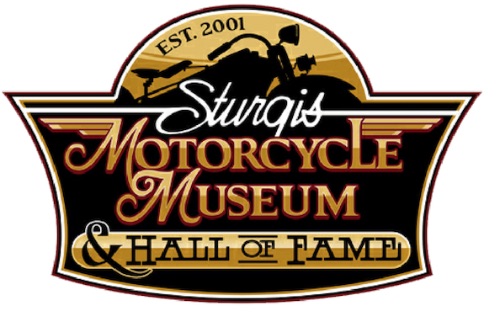
Dan doesn’t stop. He’s hitting events, building bikes, working with the Sturgis Museum and looking for vintage parts constantly. Plus, he studies the history of the bikes he’s building.
In this episode between blizzards in the outlaw hills east of Sturgis, SD, we cover the final paint for Dan’s 1914 twin.

Dan’s rebuilding the engine right now, while Tim Peterson of the Amazing Flat Earth Art Studio, in Spearfish, SD is handling final pinstriping.

Let’s back up to the Silent Gray Fellow base coats and clear coats for this project. The base paint work was handled by John from Lophat Customs in Keystone. “It’s a top-secret formula for the color,” said Dan. “I got the color from an old-timer in Milwaukee.”
If you like this color, Dan will share the formula.

As you can see most of the components are painted gray. Originally, they were sprayed with a heavy oil-based enamel. Over the years the process and the chemicals have changed from good to bad to much better with today’s acrylic enamels and amazing clear coats.

Note the rear brake drum. Harley was beginning to shift from a bicycle/cam based internal brake to an interior band, which didn’t last long. The bicycle-based brake was a mechanical challenge against the increased motorcycle horse power. Plus, there was a heat issue. Then they tested the exterior band over the drum, which had other issues. There weren’t a lot of paved roads at the time and dirt and debris could stop brakes from working. Hell, what about water, rain and mud.

It wasn’t until the ‘20s that they figured out the dual internal shoe, the cam and proper leverage to force them against the drum. I figured the rigors of WWI made the leading-shoe system critical.
Here’s where another restoration controversy rears its bizarre and historic head. Dan pointed out that if you lined up a dozen restored Silent Gray fellows, the colors of gray would vary widely. His gray seems rich to me and deep with a coat of clear.

There’s even more controversy stirred into the restoration pot. For instance, the factory took a restored 1914 out of the museum and freshened it up. Unfortunately, the painter pinstriped it with 1913 art guidelines. The pinstriping was slightly different from year to year. Of course, that meant that guys all over the country were following the factory restoration, and it was wrong.

The factory also installed the wrong neck patent decal. It should have been the oakleaf design on a ’13 and early ‘14s. A problem surfaced.

There are a myriad of similar issues including the fork cups. One year they were plated and the next machined. One year with a smooth exterior and the next with a step in the lip for a dust cover.

Up until 1916 the rectangular foot boards were made and the rubber pads glued, not riveted. Again, if you’re restoring a bike like Dan is doing and want it right, watch out. Dan bought footboards but had to weld and cover the rivet holes.

He made his axle nuts with hex stock, also center-stand nuts. He found the stock and the taps on eBay.

Okay, so up to ’13 the pinstriping was silver and red. Then in ’14 they shifted to gold and red. Check your decals.

We drove over to Tim’s art studio in Spearfish, and I noticed his chopper parked right next to his paint bench. It wasn’t fancy or a complete custom, but it contained a cool flair and terrific lines. I complimented Tim on his scooter and the bike’s history came to light. He’s owned it since it was new.





Tim attended the rally on this Shovelhead for 41 years. He hasn’t missed a year of having his bike parked on Main in Sturgis and he has the proof with 41 hash marks stripped on his frame.


Unfortunately, he broke down last year on the way into town, just off exit 17. His bike wouldn’t start and he returned home. It took him a week to figure out he had a collapsed lifter and correct it. I have always like solids…

“I like painting and striping bikes, much more that creating signage,” Tim said while taping Dan’s tanks. Unfortunately, Tim is the go-to guy for quality signage in Sturgis and Deadwood.
Many of his signs are amazing works of art, and he has the quality, abilities, products and finishes to make them last through the next blizzard or heat wave. When you see a knockout sign in Deadwood or at the Rally in Sturgis, it must be Tim’s work.

Tim’s retired from installing signs above the second floor on old buildings after he almost fell off his ladder during a Deadwood gunfight acted out on the historic streets. No more…


And if you’re in the market for a collectible today, the industry is expanding like mad, with remanufactured parts. Some are way more precision than the originals. We will take you through the process here, which should help with a purchase or my own project down the road. Fortunately, Dan is very open about his bike builds and experiences with products.
I’m getting to tag along and learn.
–Bandit

